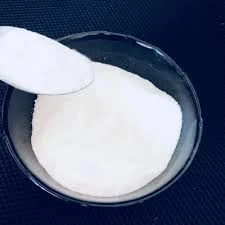
ഒക്ട് . 13, 2024 19:57 Back to list
hydroxyethyl cellulose
Hydroxyethyl Cellulose An Overview
Hydroxyethyl cellulose (HEC) is a water-soluble polymer derived from cellulose, a natural polymer that constitutes the structural component of the cell walls in plants. As an ether derivative of cellulose, HEC is primarily used in a variety of applications due to its excellent thickening, emulsifying, and film-forming properties. This versatility has made HEC an essential ingredient in the pharmaceutical, cosmetic, food, and construction industries.
Properties and Characteristics
HEC is characterized by its high viscosity and ability to form gels in solution. This makes it particularly valuable in applications where the control of texture and consistency is necessary. Water solubility is a significant attribute of HEC, which allows it to dissolve easily in cold water, producing a clear, viscous solution. Furthermore, it is non-ionic, meaning that its properties are not affected by the pH of the solution, making it suitable for various formulations.
The degree of substitution in HEC can impact its functionality. Generally, HEC has a degree of substitution ranging from 1.0 to 2.5, which correlates with its ability to modify flow properties in liquids. The higher the degree of substitution, the greater the viscosity and thickening effects. Due to its biocompatibility and non-toxic nature, HEC is considered safe for use in food and personal care products.
Applications
hydroxyethyl cellulose

1. Pharmaceuticals HEC is widely used as an excipient in pharmaceutical formulations, serving as a thickening agent and stabilizer. It can enhance the viscosity of gels and suspensions, improving the bioavailability of active ingredients. HEC is often found in oral, topical, and ophthalmic preparations.
2. Cosmetics In the cosmetics industry, HEC is valued for its ability to retain moisture and improve the texture of creams and lotions. It acts as a binder and film-forming agent, contributing to the overall sensory experience of various beauty products. Its soothing properties also make it a common ingredient in acne treatments and moisturizers.
3. Food HEC is utilized as a food additive to improve texture and consistency in sauces, dressings, and dairy products. It acts as a stabilizer, preventing separation and maintaining the quality of emulsions. Additionally, its ability to retain moisture aids in the shelf life of food products.
4. Construction In construction, HEC is included in cement-based materials, such as mortars and concrete. It enhances workability and water retention, ensuring a smooth application and improving adhesion. Its addition can also reduce cracking in dried plaster and improve the overall durability of construction materials.
Conclusion
Hydroxyethyl cellulose is a remarkable polymer that plays a crucial role in various industries. Its unique properties, including water solubility, thickening ability, and biocompatibility, make it an invaluable ingredient for improving product performance and stability. As industries continue to evolve, the demand for versatile and effective compounds like HEC is expected to grow, paving the way for innovation in formulation technology. Research is ongoing to explore further applications and optimize existing formulations, ensuring that hydroxyethyl cellulose remains a staple in modern manufacturing processes.
-
Versatile Hpmc Uses in Different Industries
NewsJun.19,2025
-
Redispersible Powder's Role in Enhancing Durability of Construction Products
NewsJun.19,2025
-
Hydroxyethyl Cellulose Applications Driving Green Industrial Processes
NewsJun.19,2025
-
Exploring Different Redispersible Polymer Powder
NewsJun.19,2025
-
Choosing the Right Mortar Bonding Agent
NewsJun.19,2025
-
Applications and Significance of China Hpmc in Modern Industries
NewsJun.19,2025







